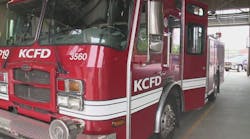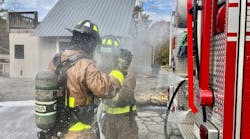More communications-related activity than ever is impacting public safety. There are a number of reasons for this. First is the continued development and implementation of P25 standards for land mobile radio (LMR) systems. Next, the 800-MHz rebanding process involving public safety, Sprint Nextel and the Federal Communications Commission (FCC) continues to move forward. Additionally, the looming FCC Narrowband Mandate takes effect Jan. 1, 2013.
The most recent and regularly publicized initiative involves legislation for additional 700-MHz public safety spectrum (D Block) and funding for the build-out of a nationwide public safety broadband wireless network. Lastly, new smartphone/tablet technology is transforming how we access and consume data through a plethora of applications.
• Narrowband update. The FCC Narrowband Mandate was enacted more than 20 years ago to enhance radio spectrum efficiency. The FCC mandate requires all VHF and UHF public safety and industrial/business licensees using 25-kHz LMR systems to move to 12.5-kHz radio technology by Jan. 1, 2013. All agencies and organizations should be planning to meet this mandate. Meet with representatives from your organization’s radio service shop or visit manufacturer websites to ensure that base station transmitters, mobile and portable radios meet the requirement.
During the narrowbanding process, departments have learned that on occasion, there have been radio coverage changes and this must be identified and addressed. Additionally, localities involved in mutual aid agreements must coordinate the rebanding process to ensure that all radios are compatible.
At the time of this article, there was mention of possible legislation to extend the narrowband mandate for two years, but there was no assurance this would be enacted. Even if the plan in place may require additional funding and/or an extension, the FCC will look to see who is making a concerted effort to meet the mandate. For more information, see http://www.iafc.org/Operations/LegacyArticleDetail.cfm?ItemNumber=3421.
• Public safety communications evolution. By now, you have heard about public safety broadband communications from many viewpoints. Some even suggest that broadband systems will replace mission-critical LNR. This is not true for the near future because the technology that could make it possible does not exist. Those interested in understanding more about the future of public safety communications may look at the Public Safety Communications Evolution Brochure (http://www.safecomprogram.gov/library/lists/library/DispForm.aspx?ID=330), just released by the Department of Homeland Security (DHS) Office of Emergency Communications and the SAFECOM Program. This brochure is one of the best sources to see the path forward for public safety communications. It can be used to educate members of public safety and appointed and elected officials.
• Nationwide public safety broadband wireless network. The movement of legislation through Congress has been slow and challenging. Currently, there is legislation in both the Senate and the House of Representatives for building a nationwide public safety broadband wireless network and allocating additional radio spectrum (D Block) along with funding. The primary bill that has unanimous national public safety support is S. 911. At the time of this article, the JOBS Act of 2011 was moving forward. The JOBS Bill has several issues concerning public safety and the two most significant items involve a required giveback of 700-MHz narrowband spectrum and the proposed administrator governance model. These issues and others are being addressed by all of the major national public safety organizations through the Public Safety Alliance. For additional information, see www.psafirst.org.
• Smartphones/tablets. Smartphones and tablets are taking the mobile market by storm. The devices have various operating systems and each has unique nuances. Presently, the primary operating systems are Apple, Android, Blackberry and Windows Mobile. While the Apple iPad and Galaxy are two of the most popular tablets, more are becoming available and becoming less expensive. Choosing a mobile device depends on the functionality you need to do your job and the applications available for each device. First, determine whether you will require public WiFi or mobile connectivity through a commercial wireless carrier. Then you must determine which mobile device has compatible applications to meet your functional needs. While Verizon, T-Mobile, AT&T, Sprint and other major carriers are promoting smartphones, Sprint has added its Direct Connect feature back into its newer smart phones with similar PTT functionality and performance and has a “one-to-one” and “one-to-many” talk capability.
• Applications. When it comes to mobile phone applications, a 2011 report on MSNBC reported that Apple had 230,000 applications in its app store while Android had 70,000. The number of applications is relative and some functionality has many duplicated applications. In other words, there are multiple applications for the same purpose and getting through them all can be challenging. Free applications usually available through the marketplace on the mobile device include CADPAGE, FEMA Preparedness, Hands Only CPR, AED Locator, Earthquake Alert, Radio Scanner, VueToo, Weather, Gmail, Tune-In Radio, Facebook, Twitter and many more. All of these programs can be found by searching in the mobile device’s marketplace.






